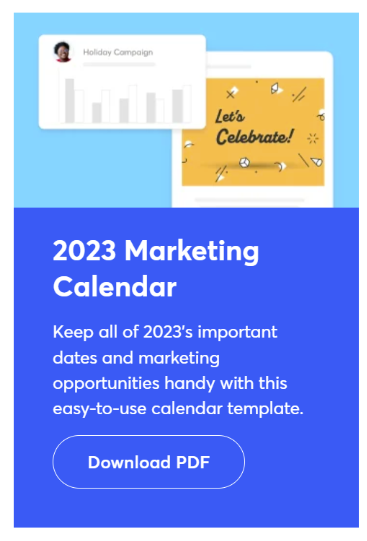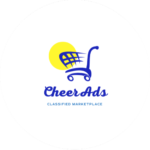You’ve designed your website, fine-tuned your product, developed a list of services, and worked on putting together a brand that will hopefully draw potential customers to your business. The next stage is all about lead gen, aka finding out who is interested in your business. You might build landing pages, offer an incentive like gated content, or engage in sales conversations to help nurture your leads.

What is a lead?
To put it simply, a lead is a potential customer. This can be anyone who has expressed some kind of interest in your business’ products or services.
Types of leads
In general leads fall into two broad categories: cold leads and warm leads.
A cold lead is someone who hasn’t expressed any interest in your business. Cold leads are usually nurtured through marketing tactics such as cold calling, door knocking, and similar practices which engage a potential customer who has no prior knowledge of a company or service.
A warm lead is a potential customer who is aware of your business and has had some form of contact or interaction with your business through marketing, sales, product, or service at one time or another.
Types of qualified leads
The following are four categories of qualified leads that you can nurture towards making a new investment in your business.
Marketing qualified lead: Marketing generated leads are people who have engaged with your marketing but are not quite ready to make a potential purchase. This type of lead includes website visitors who have taken no action towards purchasing a product or service, as well as potential customers who have interacted with your social media and events — showing interest in your brand. Under the broader marketing funnel concept, lead gen funnels focus more on lead generation marketing through awareness of a brand, product or service.
Sales qualified lead: This type of lead is a person who has made an expressed interest in purchasing your product or service. This includes people who have added items to their cart and abandoned them and people who have been referred to your product or service by a current customer. This type of lead falls into the interest and consideration categories of the marketing funnel.

Product qualified lead: A product qualified lead is similar to a sales qualified lead except that this potential customer has completed a trial of your product or service and is now ready to invest. This type of lead falls into the consideration category of the marketing funnel.
Service qualified lead: A service qualified lead is a potential customer who has directly indicated to a sales representative that they are interested in making a purchase. This could be customers who make direct contact with your company through phone, email, social media, or by speaking to a sales rep in your brick and mortar store. This type of lead falls into the action category of the marketing funnel.
Website visitors
Website visitors are leads who have visited your website but haven’t taken action to subscribe or purchase.
Abandoned cart leads
Abandoned cart leads are potential customers who have placed an item/service in their cart on your business’ ecommerce website but have abandoned it before completing the purchase.
Social media leads
Social media leads are people who have shown interest in your brand by following/engaging with your business’ content on social media.
Referral leads
Referral leads come from previous customers. When a previous customer gives a good opinion of your business to a peer they are referring them to your business.
Event leads
Event leads are people who have expressed interest in your business by attending an in-person or online event, trade show, or conference.
Inactive leads
Inactive leads are people who have shown prior interest in your business (think through social engagement, event attendance, etc.) and have been inactive for a while.
What is lead generation?
To define lead gen, simply: it is the process of engaging with potential customers (or businesses through B2B lead gen) and nurturing them towards a purchase by steadily increasing their interest in a product or service. This process can occur through any number of means — whether your business decides to use email, social media, valuable content, or a combination of tactics to engage and interest your leads.
How to generate leads
To generate leads for your business you need to pique the interest of your target audience by providing them with value. “Value” can include engaging your audience through:
- Branded content on social media (organic and lead generation ads)
- Personalized email marketing
- Discounts and coupons
- Thoughtful conversations via phone, email, and in-store
- Free content like blog posts
- Encouraging downloads of lead magnets featuring high value content, like gated ebooks and white papers that can be received in exchange for providing an email address.
- Referral partnerships
Any of these tactics can be used in the lead gen process to achieve your end goal: getting potential customers to sign-up on a lead gen landing page to subscribe to your business’ contact list, or to drive them to make a purchase.
Find out more how grow your leads with email marketing
How to qualify leads
Qualifying a lead is the process of understanding how interested a potential customer is in purchasing your product or service. A lead might qualify itself (express interest) in the following ways:
Interacting with lead gen forms and landing pages: A customer who is interested in learning more about your business might express interest through filling out an opt-in form or providing information through a landing page to subscribe to email communications.
High open rate and click-through rate: You can be sure that a lead is interested in your business when they have a high open rate for email communications from your business. If the lead also has a high click through rate on CTAs placed within your email communications, you know that the lead is receptive to your business’ products and services and has a high likelihood of making a purchase.
Downloading lead magnets: Lead magnets are often gated content that can be accessed by leads in exchange for giving a company their email address. Lead magnets included high value content like ebooks and whitepapers that warrant an information exchange in order to be accessed.

High engagement on your website: When users are logged in to your business’ website you can track engagement on product pages, items added to cart, and blog post views.
Scoring Leads
In order to determine how interested a potential customer is, craft a lead scoring system that attributes a value score for particular actions. For example:
You might develop a scoring system for your company which attributes five (5) points to a leads score when they interact with an opt-in form.
You might give a fifteen (15) or twenty (20) point score when a customer downloads a lead magnet.
Develop a lead scoring system to help you determine how likely a customer is to purchase a product or service.
Manage and nurture leads
Once you have qualified leads it is important to nurture them towards purchasing in a meaningful way. You do not want to spam your potential customers in order to get them to convert. You do, however, want to create a personalized experience that provides leads with value. Here are some ways to do this:
Email Segmentation
Email segmentation allows you to craft specialized lists that can cater to your audience at different stages in the customer journey. Create segmented lists to send welcome series emails, product and service overviews, and other email communications designed to steadily increase the interest of your potential customers.
Make sure that what you are providing is relevant. Customers who have expressed interest in a particular product on your website might not be receptive to receiving information about a service your company offers that they have not previously expressed interest in.
For example: say you own a company that sells loungewear. You might want to send emails that give overviews of your products. The flip side is that your company is also partnering with a local exercise studio. While you might advertise your partnership in a general email newsletter, you will likely want to avoid sending your potential loungewear customers event announcements for the local exercise studio if they have not expressed previous interest.
Creating segmented lists allows you to make sure that the right content reaches the right audience.
Personalized emails/follow-up emails
Personalize your email sends with dynamic fields that automatically populate with the recipient’s name so they feel recognized by your business. Craft follow-up emails to re-engage with potential customers following an initial communication.
Providing valuable content
The best way to nurture your leads towards purchase is to provide them with valuable content. Sales and discounts, event announcements, and exclusive subscriber content are all great ways to lead potential customers to the buy now button.
Testing
Test your email sends through A/B testing copy, subject lines, design, and content layouts. Select an element to test and send two different versions of your email to a subsection of your audience. Collect and analyze your results to see what version performed better before you send a finalized email to the rest of your audience.
Take note of your reporting metrics to optimize send times. Analyze demographic information and craft content that your audience will find valuable. View heat maps to see what areas of your email attracted your audience and what areas of your emails did not.
Calls to action
Your email should have a clear intention for your audience. From the subject line to the body copy to the layout and design, your email should be directing the recipient to complete a desired action. Your call to action should instruct your audience to select a button or link to learn more information, to complete a purchase, or to sign up for an event.
Make sure your call to action is appropriate in tone for the action you want your audience to take. You could express urgency for your audience to make a purchase now as a sale is about to end, or you could use a gentle and encouraging tone that plays on your readers’ heartstrings to make a donation.
Lend gen examples
While we have already covered a few ways your business can generate leads, here are some more examples of tactics you can use to turn potential into purchase.
Landing pages and opt-in forms: Landing pages and opt-in forms let you know that people want to hear from your business. Use landing pages and opt-in forms to populate segmented lists for welcome emails, events, and other valuable information that can be provided by your business communications.

In-person events: Host in-person events and gather email subscribers or encourage leads to make a purchase.
Free trials/demos: Free trials and demos of your product or service can help build credibility for your business. Allow potential customers to try before they buy.
Content upgrade and gated content: Offer content upgrades or gated content in exchange for contact information like name and email. Similar to gated content, a content upgrade requires an exchange of information in order to be downloaded/accessible.
Giveaway/contest: Run a giveaway or contest to engage potential customers by offering a powerful incentive, like a free product or service, in exchange for their participation in your contest.
Referral program: Create a referral program to incentivize word of mouth referrals.
Leading your potential customers
Leads are people who express interest in your business, your job is to nurture them toward taking a desired action like signing up for an email newsletter or making a purchase. Take the first step toward building potential by qualifying your leads.
Create a landing page or opt-in form to gather contact information, provide value to encourage information exchange, analyze subscriber data like open and click-through rate, and learn about your audience based on their interactions with your website content. Once you understand how interested a prospect is, you can direct them further along the customer journey — turning blog viewers into email subscribers and abandoned carts into purchases.



Leave a Reply